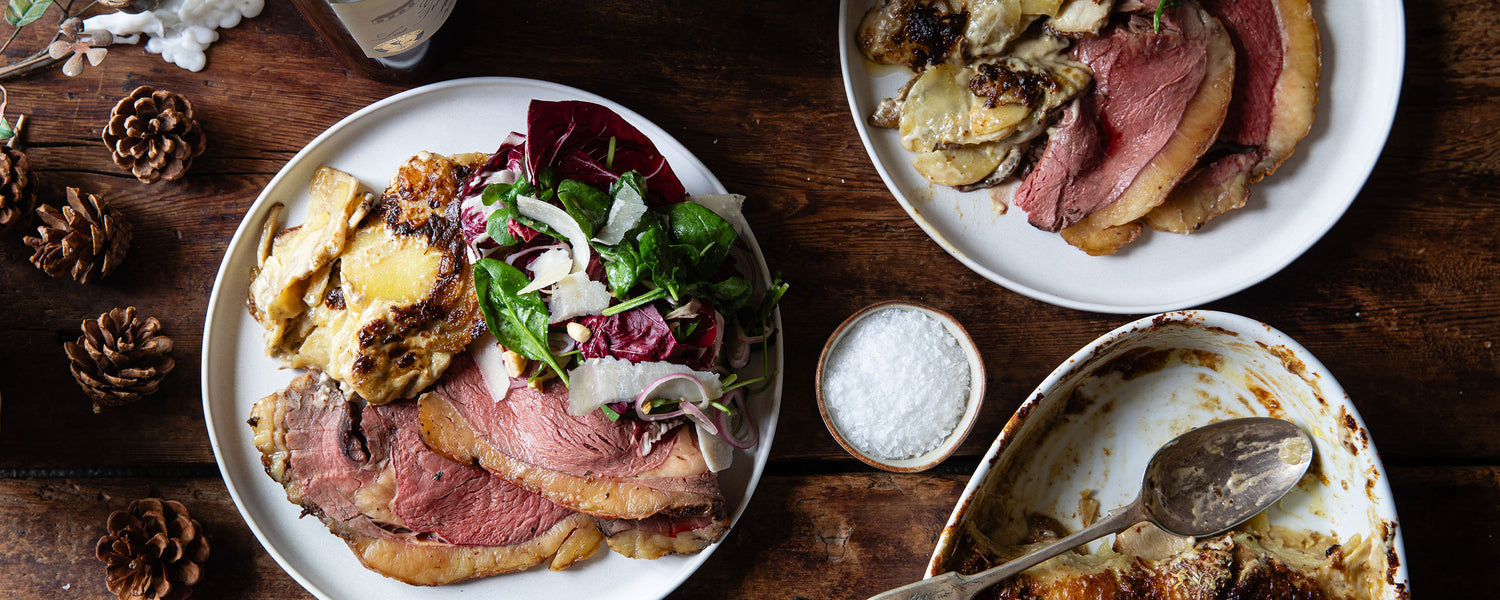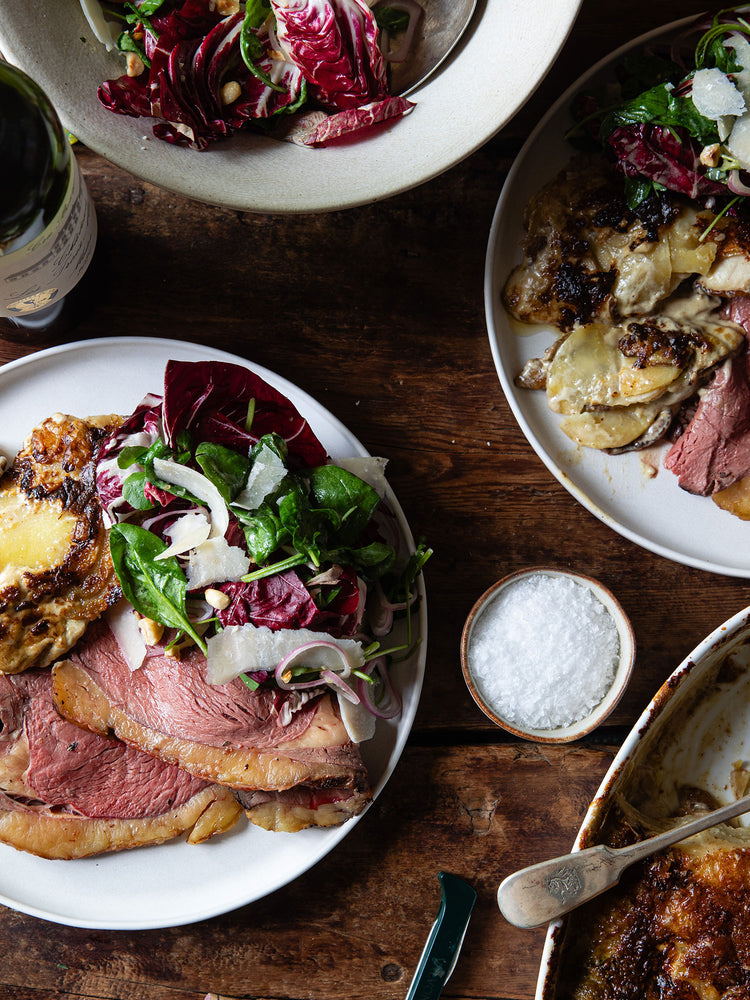Chateaubriand 700g
- Delivered fresh
- Native breed
- Grass-fed
- Great for home roasting
- Suitable for freezing
Product description
Chateaubriand Steak – Heritage Breed, Grass-Fed & Dry-Aged
Chateaubriand steak is a luxurious beef roast that generously serves two. Cut from the thickest part of the prime beef fillet, this classic restaurant cut is celebrated for its buttery tenderness and rich, beefy flavour.
Prepared by our expert butchers, Swaledale Chateaubriand is sourced from heritage breed cattle, slow-grown on a natural grass diet in the Yorkshire Dales. Dry-aged on the bone for over 28 days, it delivers exceptional depth of flavour and an unforgettable eating experience.
Chef Valentine Warner Inspires
"Whilst fillet is certainly a more expensive and popular cut, one could rightly argue its flavour is less pronounced due to its lack of work over the cow's lifetime. This is certainly not so with Swaledale's slow-grown cattle and I can only describe the taste of their chateaubriand as excellent, all be it certainly gentler in taste than more active parts of the cow.
This is a very tidy little joint and easy to cook but I would add it really is a joint for those who like their meat rare to medium. A small roast it will feed two to three, just enough that gluttony be avoided. Enjoy this prime steak as it is a delicate joy.
For the oven I would first sear it hard and fast to achieve browning on the outside, then straight into a hot oven for finishing.
Watercress sauce is a very easily made accompaniment. My recipe for Chateaubriand with Bone Marrow & Watercress Sauce consists of a little sautéed shallot and garlic to which a little chicken stock is added before blitzing it to velvety smoothness with fresh watercress, crème fraîche, a little Dijon mustard and seasoning.
Cooked over charcoal having been rolled in crushed fennel and coriander seeds with dried rosemary, lemon zest and garlic it is fabulous, especially when served with an unctuous potato salad rich with mayonnaise all flecked with fresh tarragon and parsley.
A smearing with good curry paste before the grill will also deliver joy.
A lesser known approach and once browned I like to very lightly braise it under a lid, only briefly with sautéed mushrooms, gem lettuce, a little stock, white wine and vinegar. This is a delicate dish, the juices then emulsified with a little cold butter and poured over your plated arrangement.
On a cooked lettuce continuation and lastly a dish of petit pois, bacon, carrots and lettuce, finished with vinegar, butter, Dijon mustard and fresh mint, the pink slices of this beef then gently draped upon top and it is certainly a celebratory dish to welcome the return of spring."
What is the Most Suitable Breed for Chateaubriand?
When it comes to flavour, texture and overall quality, there isn’t a single standout breed. Native cattle such as Dexter, Highland and Belted Galloway can all produce outstanding beef. However, the breed is only the starting point. Other important factors include the farming system, the animal’s diet, and age at slaughter. At Swaledale, we favour slightly older animals that have matured slowly on high-quality grass and haylage. The best beef is always the result of all these elements working together.
Can I Order a Larger Chateaubriand for Christmas?
Because our heritage breed cattle are much smaller than commercial breeds, chateaubriand is rarely larger than 700g. For a festive centrepiece, we recommend cooking two 700g joints side by side, or choosing a whole fillet of beef as an alternative.
Ingredients
Cooking advice
Journal
Background
Customer Reviews
Recommended for You
Benefits of Swaledale Butchers
-

Always Fresh, Never Frozen®
Orders received before 9am are freshly prepared and shipped via DPD for next-day delivery. We serve the whole of the UK, excluding the Channel Islands, Northern Ireland, and certain areas of Scotland.
-

Unparalleled Quality
For over ten years, our meat has been celebrated in Britain’s finest restaurant kitchens. We’re proud to work with native breed farmers and to genuinely support sustainable, traditional farming - values that define Swaledale Butchers."
-

Sustainable & Traceable
We partner with select farms and trusted local abattoirs, ensuring high animal welfare standards and complete traceability for all our products.











